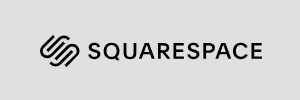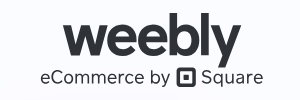
Building a successful website or blog is fairly tricky. Being an expert in your field isn’t enough by itself, nor are good writing skills, extensive SEO knowledge, or marketing talent. You need to know what information people want and need to see first and foremost, then apply the other skills as you progress. Sometimes the subject matter will be obvious, other times you’ll look at your business partner with a confused look when they tell you that you need to review WYSIWYG tools, despite their inferiority to WordPress.
WYSIWYG (or What You See Is What You Get) platforms are generally designed to attract novices who need a presentable website, but their simplicity leads to sacrifices that will usually cripple business owners who want to establish themselves online in the long run. Thinking about this a bit more, I agreed that a more informed overview would be really helpful for new business owners, and started testing website creation tools in earnest.
Sure enough, these reviews have become some of our most popular, but we’ve looked at a lot of WYSIWYG environments to this point. Many of our reviews are 3,000+ words, which is a lot to take in all at once. In the interest of making your comparison process easier, today’s post is going to provide a brief summary of each WYSIWYG and website creation environment we’ve reviewed to date, letting you compare and contrast at a glance.
We’ll be linking to our full reviews for each entry and updating this post as we update, so please feel free to bookmark this page as well for your convenience. For a full summary of our review criteria, you can either check out a full review or swing by our Free vs. Premium article – it outlines why we consider WordPress to be the gold standard for websites and is a helpful read for business owners to boot.
Jump ahead to:
#1. Squarespace. Overall Rating: 7/10
 Easily the best of the WYSIWYGs I’ve reviewed to date, Squarespace gives its users a level of control few block-based platforms offer. Everything from basic designs to e-commerce is intuitive, affording simple options for resizing, rearranging, and integrating with a lot of popular third-party tools.
Easily the best of the WYSIWYGs I’ve reviewed to date, Squarespace gives its users a level of control few block-based platforms offer. Everything from basic designs to e-commerce is intuitive, affording simple options for resizing, rearranging, and integrating with a lot of popular third-party tools.
This integration also extends to moving content to and from Squarespace. While primarily limited to what can be moved via XML files, this is another somewhat unprecedented feature for a WYSIWYG that mimics a very useful tool in WordPress.
Despite their innovative approach to managing common WYSIWYG hurdles, Squarespace has its flaws too. Some examples of these can be found in key areas of SEO like the convoluted way they manage alt tags and certain headers. Another stems from how they manage to omit a capable backup system, despite import/export functionality. The last critical one arises from their treatment of mobile/tablet versions of your site, which while often successful interpretations, give you no say in their presentation.
Fortunately, many of these issues can be offset by their excellent help articles, which make finding most answers to your questions an absolute breeze. While no substitute for WordPress, Squarespace is one of the few WYSIWYGs I could recommend to you without grimacing.
#2. BigCommerce. Overall Rating: 7/10
 BigCommerce is unique among the platforms I’ve reviewed to date, in that it is quite a bit closer to a CMS (Content Management System) than a WYSIWYG in most regards. It is designed quite a bit more simply than WordPress while being incredibly similar, making it an ideal environment to familiarize yourself with navigation and features.
BigCommerce is unique among the platforms I’ve reviewed to date, in that it is quite a bit closer to a CMS (Content Management System) than a WYSIWYG in most regards. It is designed quite a bit more simply than WordPress while being incredibly similar, making it an ideal environment to familiarize yourself with navigation and features.
This refreshing take on easy to use web design tools also takes full advantage of its flexibility. Backup features are available for portions of your site that can actually be saved to your computer, most necessary SEO features are accounted for, and third party integration is above average. Savvy designers have access to multiple types of code that can make good designs great ones.
Structure comes with a price, however, and it limits BigCommerce in a few regards. The backups I praised earlier have to be taken in a couple different pieces, covering your uploads and your theme while neglecting apps. Speaking of app neglect, you aren’t able to make any modifications to an app’s code either, as access to those files is completely blocked.
Alt tags can also only be added to product images without resorting to code, which is a noteworthy strike against SEO and completely tone deaf to the needs of their market. Plans and addons also get expensive very quickly, and while the quality is high, WordPress simply does it better for less most of the time.
Overall, BigCommerce has the potential to become a WordPress competitor, and they even seem to be probing that market a bit as evidenced by their launch of a BigCommerce experience for WordPress in 2018. Definitely keep an eye on them in the coming years.
#3. GoCentral by GoDaddy. Overall Rating: 6/10
 GoCentral set out with the goal of providing business owners with little or no web design experience the tools to create a presentable website. While their launch did anything but this, it has evolved to become one of the more functional products in their long line of WYSIWYG environments since then.
GoCentral set out with the goal of providing business owners with little or no web design experience the tools to create a presentable website. While their launch did anything but this, it has evolved to become one of the more functional products in their long line of WYSIWYG environments since then.
You’ll begin your experience with an automatically generated website based on your industry, and you can adapt it a little further with a sectional block system. Among your available blocks are an impressive array of third party tools, including basics like appointment booking and email subscriptions as well as industry tools like MLS listings and OpenTable reservations.
As you progress, you’ll also notice that you have the ability to access most key SEO settings and even roll back your site to previous backups with the click of a button. It would be nice if you had the ability to save these backups locally as GoDaddy’s terms of service state backup responsibility falls to the customer, but having them at all is still a gesture many web companies still fail to extend.
While it is virtually impossible to break a GoCentral site thanks to how structured its design system is, many will also find this to be its greatest flaw. You’ll almost always be able to identify a site built on GoCentral once you’re familiar with it, giving it a cookie-cutter feel. This is considered a feature of this gilded cage, and while executed brilliantly, it is not going to help you stand out among your competition.
#4. Wix. Overall Rating: 5/10
 If you value control as highly as I do when designing a website, Wix is going to look very attractive on paper. You can drag and drop nearly any portion of your website anywhere you’d like, offering you a full customizable experience. For those who don’t mind a blander version of their website, you also have the option of letting Wix’s Artificial Design Intelligence (ADI) strip away all complicated design elements so you can throw something together in a few minutes.
If you value control as highly as I do when designing a website, Wix is going to look very attractive on paper. You can drag and drop nearly any portion of your website anywhere you’d like, offering you a full customizable experience. For those who don’t mind a blander version of their website, you also have the option of letting Wix’s Artificial Design Intelligence (ADI) strip away all complicated design elements so you can throw something together in a few minutes.
SEO is another high point here. While I take issue with some of their bloated code and their limited URL redirection options, most features a business needs are present. Better still, you also have access to a tool called SEO Wiz that provides a to-do list and tutorials for newer users to ensure they cover their bases.
Wix also scored some brownie points with me by not trying to claim unreasonable ownership of user content. They’re one of the only WYSIWYG companies I’ve found this to be true of, and while their terms of use are far from perfect, they’re some of the best in the industry.
Unfortunately, there are a couple fairly major flaws that are holding Wix back from a higher rating. The first is their app marketplace. Quality control is severely lacking here, leaving users with a wide array of incredibly lackluster and ineffective ways to integrate blogs, PDFs, social media, etc. These all can play a role in making a good website great, so this is a pretty major blow.
The other flaw can be summed up in two words: outdated tools. Flash and iframes can be found all over Wix’s editor and apps. The former has a limited time it is even going to exist and the latter is a severe SEO strike since Google can’t read what’s in an iframe. Overall, there are just too many potholes to have any shot of a smooth web design experience – and I haven’t even gone into the problems surrounding Wix’s relationship with Shutterstock here.
#5. Simvoly. Overall Rating: 5/10
 Simvoly’s design environment is probably as close to perfection as you’ll get within a block-based WYSIWYG. You have a lot of general, very adaptable blocks that can be molded and placed pretty much wherever you see fit. Every aspect of the design interface is also intuitive, making it friendly for web designers of all experience levels. Add in some excellent tutorial videos, and many people building their first website will find the process to be painless.
Simvoly’s design environment is probably as close to perfection as you’ll get within a block-based WYSIWYG. You have a lot of general, very adaptable blocks that can be molded and placed pretty much wherever you see fit. Every aspect of the design interface is also intuitive, making it friendly for web designers of all experience levels. Add in some excellent tutorial videos, and many people building their first website will find the process to be painless.
In addition to an excellent design system, Simvoly’s SEO tools are on point. All the mandatory parts you need are present, and our only complaint was with the lack of URL redirection. You’ll only ever notice this if you overhaul your website pages, however, so the odds of many business owners running into the complications this roadblock presents are slim.
Unfortunately, there are some pretty significant problems that offset these bright points. The first is with how their advertising was presented during our review. Nobody but a search engine can truthfully make the claim “Your website will look and rank great everywhere!”, and even with a full complement of SEO features, there are limits to what a WYSIWYG can do to help you rank in competitive markets. While Simvoly has fixed this since then, basic grammar and spelling errors are still scattered throughout their website, they have a help section that has no content whatsoever, and some pretty gross terms of use for their White Label program.
Furthermore, their support system is abysmal. Live chat and a meager email form are basically your only contact options – a far cry from what the average WYSIWYG customer needs when they’re stuck in the moment. Topping off these issues is the lack of a backup system, which can make a simple mistake very difficult to correct for inexperienced users. Leaving customers on their own during a project that already appears daunting for newcomers is a great way to chase them away.
#6. Duda. Overall Rating: 5/10
Warning: Duda’s terms of service have a flaw we consider a deal-breaker. Use their service at your own risk.
 Duda got its start as a mobile web design company in 2009, and they’ve definitely worked to play up that strength in their current WYSIWYG plans. Full flexibility is available in designing mobile and tablet versions of your website in addition to the desktop view, a relatively rare feature that ensures your site will look good across all devices.
Duda got its start as a mobile web design company in 2009, and they’ve definitely worked to play up that strength in their current WYSIWYG plans. Full flexibility is available in designing mobile and tablet versions of your website in addition to the desktop view, a relatively rare feature that ensures your site will look good across all devices.
Being ahead of the SEO curve from the beginning, it also isn’t a surprise that this is one of their strong points as well. The lone drawback I found on this front was some coding bloat brought on by their widget-driven system, but the convenience of integrating tools like OpenTable and Google Maps offsets that, especially since their Developer Mode really lets an expert do a lot of cool things with their sandbox.
Unfortunately, there are a couple key problems that really hold Duda back. The first is the organization of their design tools, which is really nothing short of a catastrophe. While some settings are relatively easy to find, figuring out how to work with components like rows and their design was nothing short of an exercise in frustration. At least they are one of the few providers with a backup system if you screw something up.
The real deal-breaker came from Duda’s terms of service though. From the moment your content touches their servers, they can use it forever. Worse still, they reserve the right to sell it and your personal information to third parties without warning, consent, or compensating you beyond agreeing to their terms of service. Everyone deserves better than that.
#7. Weebly. Overall Rating: 4.5/10
 In contrast to Simvoly, Weebly has shown us how not to design a block-based WYSIWYG. Sections are extremely rigid, and require pinpoint accuracy to divide screen-wide areas into more than one piece. Some buttons are also unintuitive, which can make finding the functions you want more akin to a scavenger hunt than a web design experience.
In contrast to Simvoly, Weebly has shown us how not to design a block-based WYSIWYG. Sections are extremely rigid, and require pinpoint accuracy to divide screen-wide areas into more than one piece. Some buttons are also unintuitive, which can make finding the functions you want more akin to a scavenger hunt than a web design experience.
Weebly’s rigidity also extends to mobile views of your website through them, taking the pieces of your desktop site and slapping them together as it sees fit. There are documented examples of this in the community area of their website, and they’re only “considering” fixing it. It’s 2019, if you aren’t with the times when it comes to the importance of a mobile experience online, you’re doing it wrong.
Even the areas Weebly excels in are only slightly above average. SEO is arguably one of their greatest strengths, but you need to be able to code in order to manage header tags – a key component of how Google reads pages. You also can’t add alt tags to your header images or logos in Weebly’s editor, which leaves me wondering if they understand the skills a novice turning to a WYSIWYG actually has.
The other major strength you’ll find with Weebly is their app marketplace. You’ll be able to use quite a few third party tools through it, but many of them are features that you really should just have access to in the core editor (h1 tags being a primary example). All of the apps Weebly themselves have developed are mediocre as well, which simply doesn’t speak well about them no matter how you try to spin it.
#8: Strikingly. Overall Rating: 4/10
Warning: Strikingly’s platform lacks key SEO elements. We consider this a deal-breaker, and advise you not to use their services at this time.
 On the surface there’s a lot to like about what Strikingly has to offer. Your provided design tools are easy to understand, and fairly flexible despite being a snap-to block system. If you elect to move to one of Strikingly’s paid plans, you unlock the ability to create your own page sections as well, giving you above average control of how your website looks.
On the surface there’s a lot to like about what Strikingly has to offer. Your provided design tools are easy to understand, and fairly flexible despite being a snap-to block system. If you elect to move to one of Strikingly’s paid plans, you unlock the ability to create your own page sections as well, giving you above average control of how your website looks.
Integrating third party tools into your site is also a refreshingly simple experience. Social media, contact forms, Google Analytics, and more are at your fingertips. Best of all, Strikingly is one of the rare few companies that does not try to exercise an ownership claim over your content.
Unfortunately, as you start to dig in and work with their environment, it does not take long at all to peel away the pretty veneer of these perks to reveal a host of fairly serious issues. A number of design elements are extremely clunky and inflexible, including storefront options, blogging tools, and mobile website presentation. Backup options are nonexistent, and your support options are limited to help articles (which are admittedly well designed) or chat.
All of these issues seem like minor inconveniences when you stumble into the atrocity that is Strikingly’s SEO integration. It isn’t unreasonable to expect options for basics like meta titles and SSL support, but Strikingly offers neither – even for their storefronts. While they thankfully don’t have you collecting payment information outside a payment gateway, these missing components are both necessary functions any website needs access to in 2019.
#9. Yola. Overall Rating: 3.5/10
 Yola’s been around for over a decade and was a major name among WYSIWYG companies shortly after they founded. I’m sure you’re wondering why you haven’t heard of them if they were this popular, and the answers I’m going to give you boil down to three things: mediocrity, a failure to get with the times, and laziness.
Yola’s been around for over a decade and was a major name among WYSIWYG companies shortly after they founded. I’m sure you’re wondering why you haven’t heard of them if they were this popular, and the answers I’m going to give you boil down to three things: mediocrity, a failure to get with the times, and laziness.
This might seem harsh at first glance if you are among those who have used their services before. After all, Yola’s WYSIWYG offers an adequate design experience, complete with most of the basics you’ll require for SEO and a reasonable library of third party tools you can integrate into your site.
Unfortunately, most of the categories it does all right in or even well, most other companies simply do better. Strikingly offers a far better design space under a similar setup, Squarespace offers superior integration with third party website tools, and most other platforms have far cleaner code and methods for redirection where offered.
You might have been able to get away with these things 10 years ago, but the Internet has changed drastically in that time. Excellent mobile website experiences are mandatory in today’s world, but many of Yola’s templates haven’t evolved to offer responsive design. Flash was considered cutting edge back then, but it’s going to lose its support next year. You can’t even try a premium experience before you buy – something nearly every other company in the industry not only allows, but encourages today!
The only explanation I can come to for these baffling, dated decisions is that the powers that be simply can’t be bothered to get involved with their product or customers. Yola basically passes the buck on everything it can from their widgets to support. To make matters worse, they hide key features and support systems behind obfuscation and paywalls. You deserve better than that from any company you work with.
#10. Vistaprint. Overall Rating: 3.5/10
 If Yola is the picture of mediocrity, Vistaprint is the portrait of all that is bad in the WYSIWYG industry. Vistaprint’s name was cursed constantly by alienated customers during the years I worked at GoDaddy, and after reviewing their environment, it isn’t surprising in the least. Vistaprint’s platform is below average in every design category, but there are a few flaws that make them especially aggravating.
If Yola is the picture of mediocrity, Vistaprint is the portrait of all that is bad in the WYSIWYG industry. Vistaprint’s name was cursed constantly by alienated customers during the years I worked at GoDaddy, and after reviewing their environment, it isn’t surprising in the least. Vistaprint’s platform is below average in every design category, but there are a few flaws that make them especially aggravating.
I’ll start with the one that offended me most – hidden features. We’re not talking humorous Easter eggs you unlock with the Konami code here – we’re talking about key features like the ability to use HTML. While the average user might look at this complaint and say “That’s no big deal, I don’t know how to code anyway”, these people have a rude awakening coming from Vistaprint (and by extension Google).
You see, in addition to hiding certain features, other critical ones like headers simply aren’t programmed into Vistaprint’s WYSIWYG at all. This means that the ONLY way to add a header is to code it in (and you’ve got to have them on every page so Google can read your content properly). Other features you’re likely to miss include but are not limited to blogging tools, URL customization, URL redirection, and online store customization.
This is of course assuming you get far enough in the design process to even appreciate that these key components are unavailable. Vistaprint’s design editor actively gets in the way of your ability to edit certain text blocks, rigidly forbids anything that changes the look or feel of a block, and gets little to no attention from its developers when customers ask for these features. There’s a reason they lost the tiebreaker handily to Yola here.
Looking for a 10/10 web design option?
Let us build a website for you in WordPress! You’ll get a richer design, proper SEO framework, a full backup copy to call your own, and an experience that is tailored to help your company succeed. Just call 319-229-5225 and we’ll help you get started.
Prefer to design the site yourself? Swing by our store for all the tools you’ll need to establish your online presence.

Braden is one of the founders of Midwest Websites, and has been professionally writing and developing websites for over 7 years. His blog posts often take an experience from his life and showcase lessons from it to help you maximize online presence for your business.

